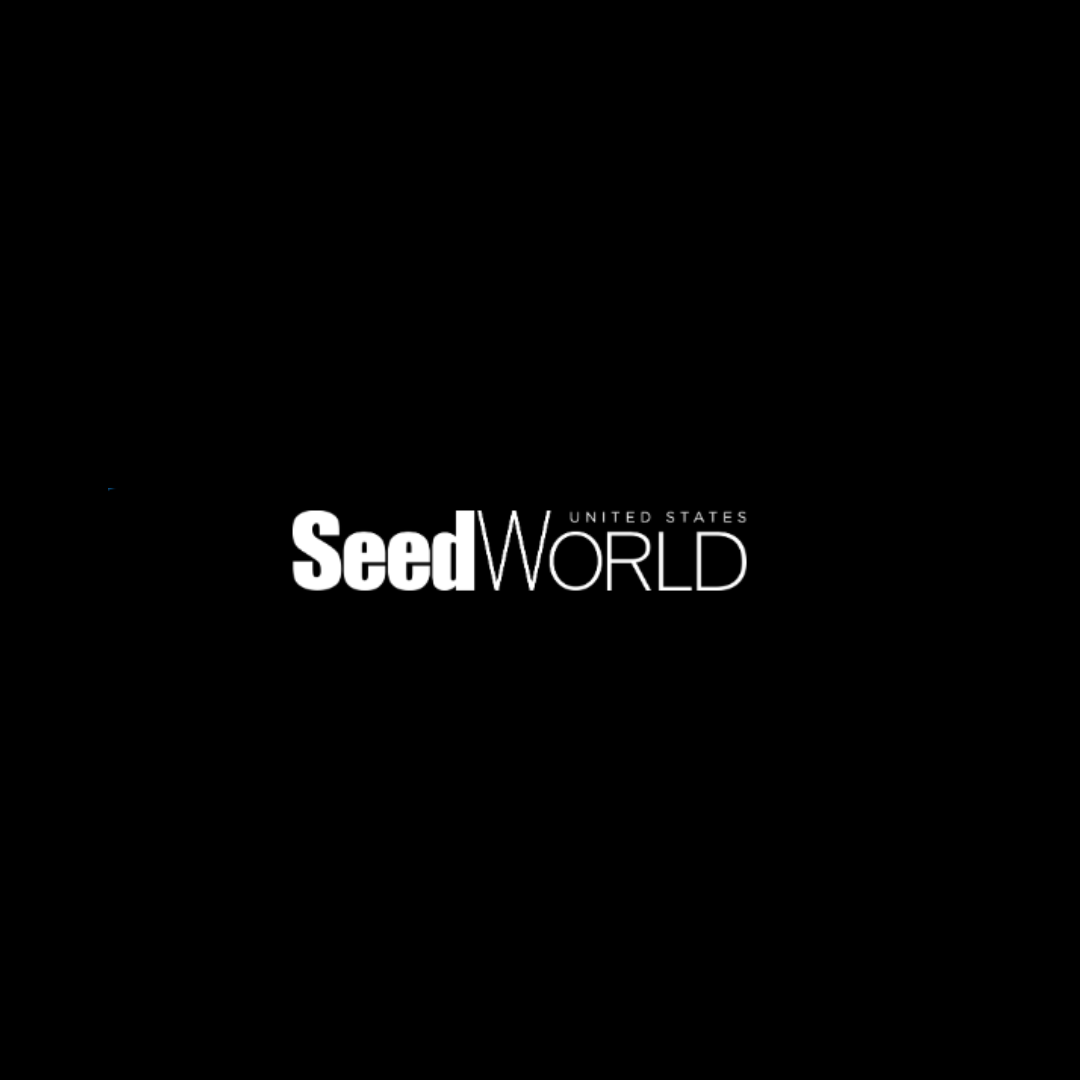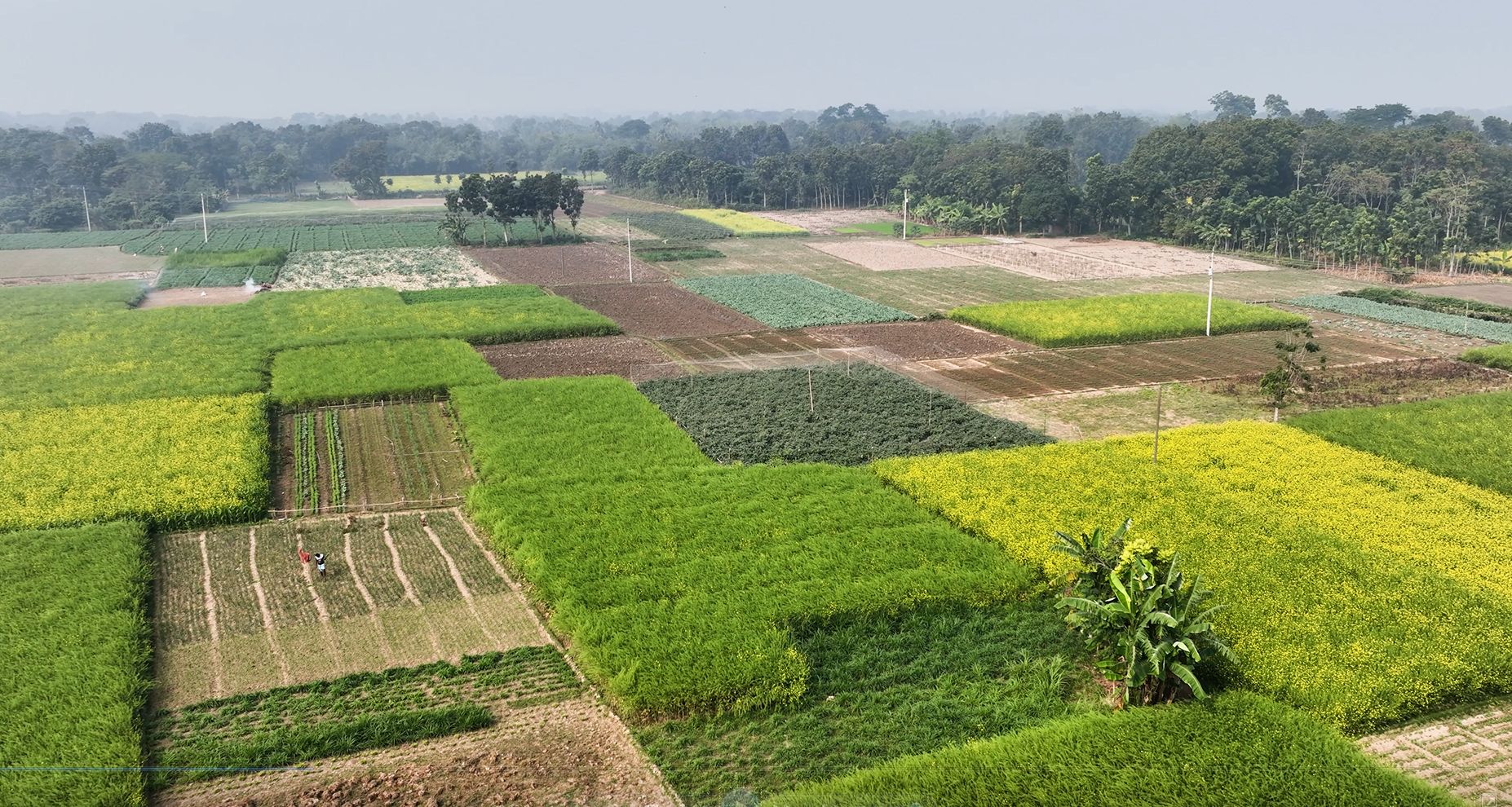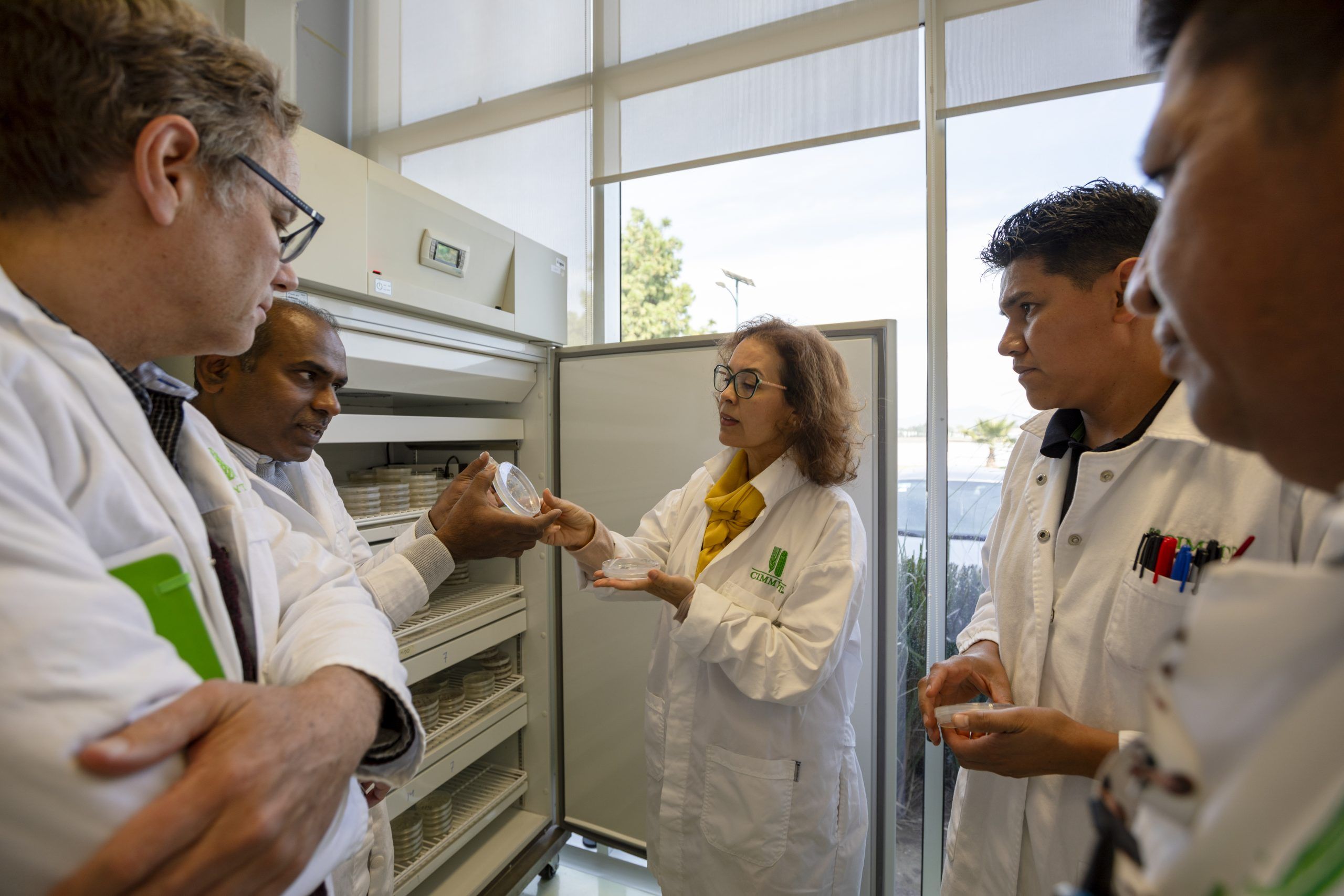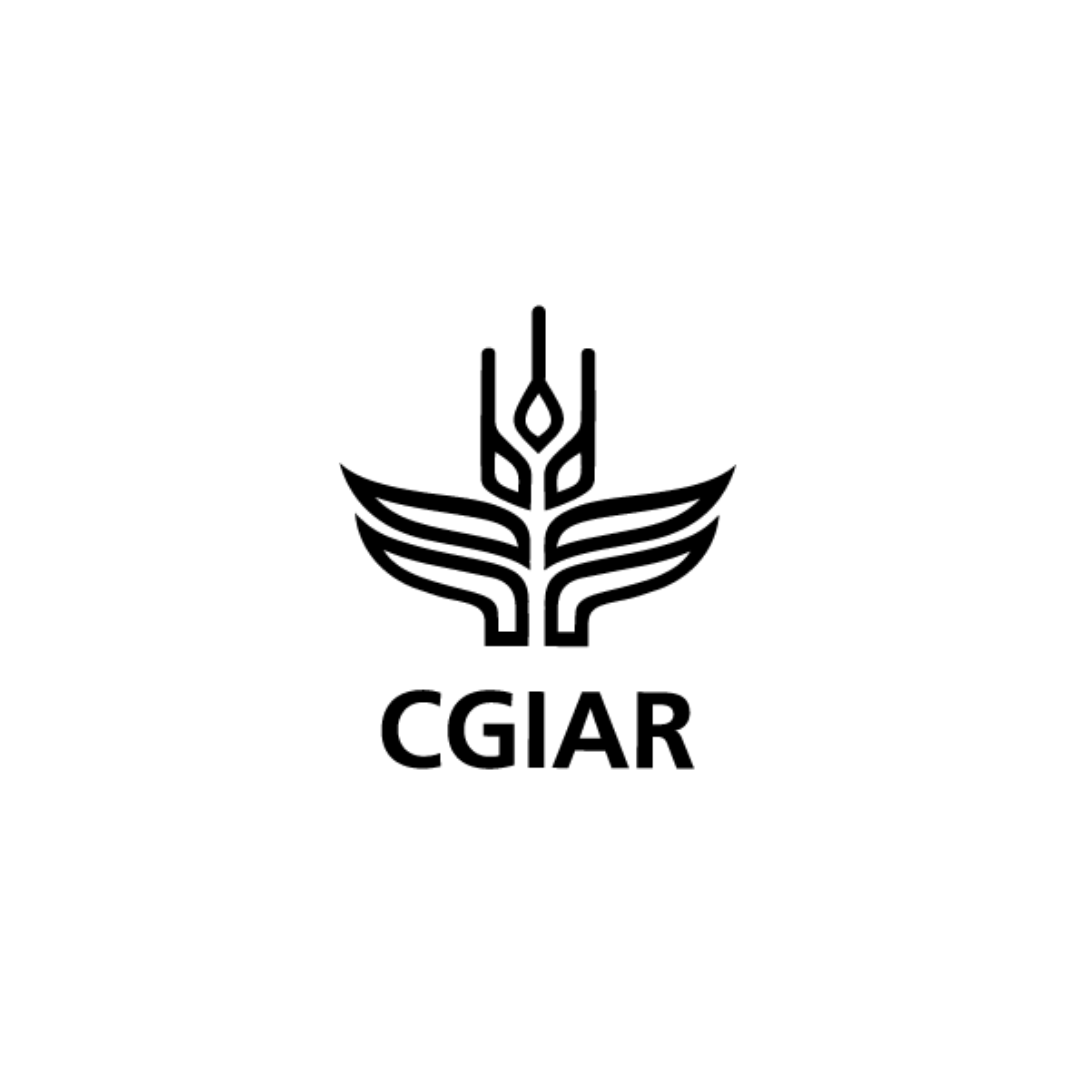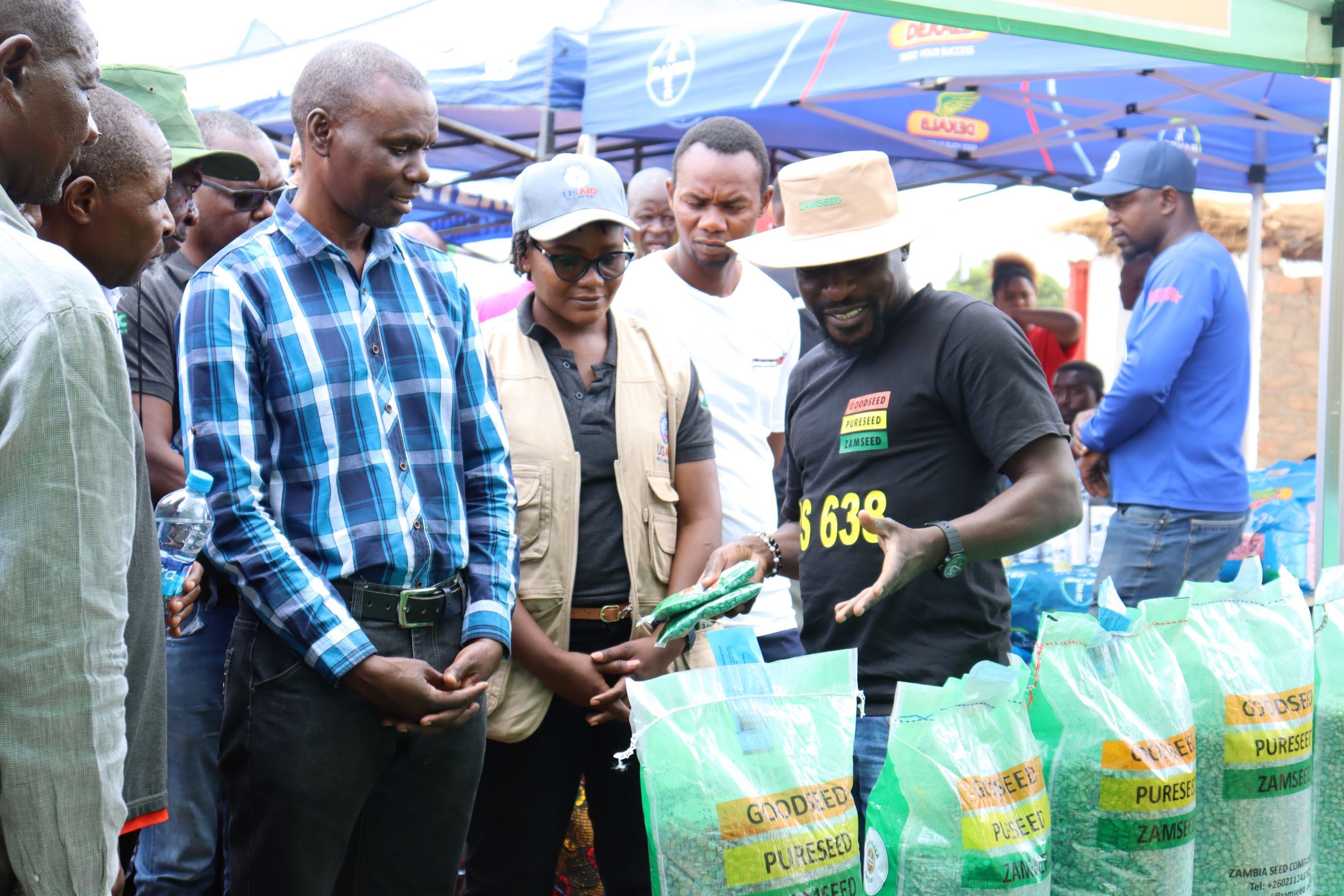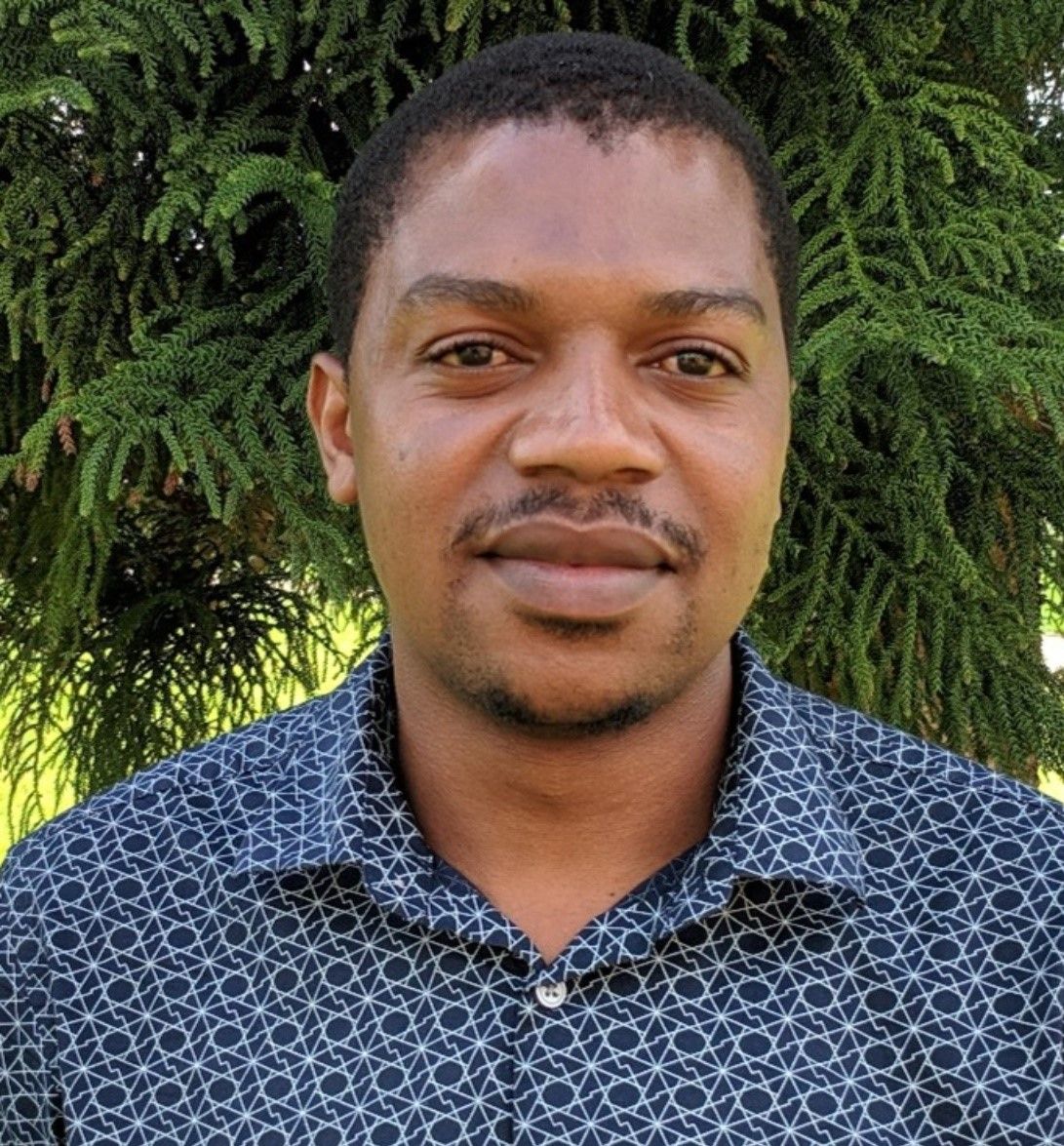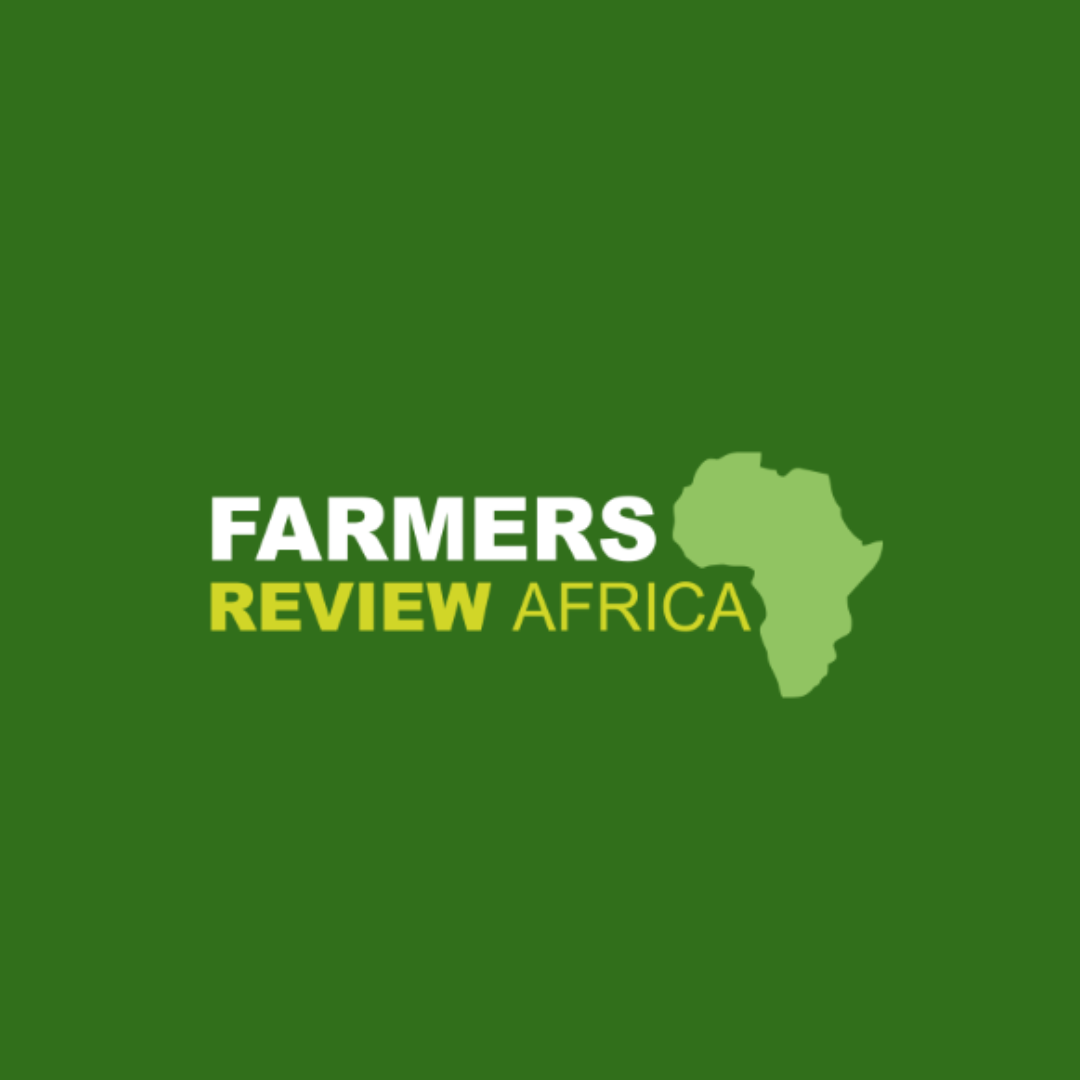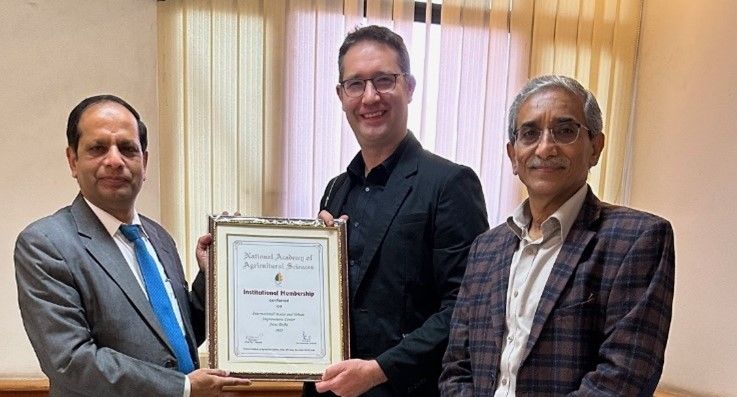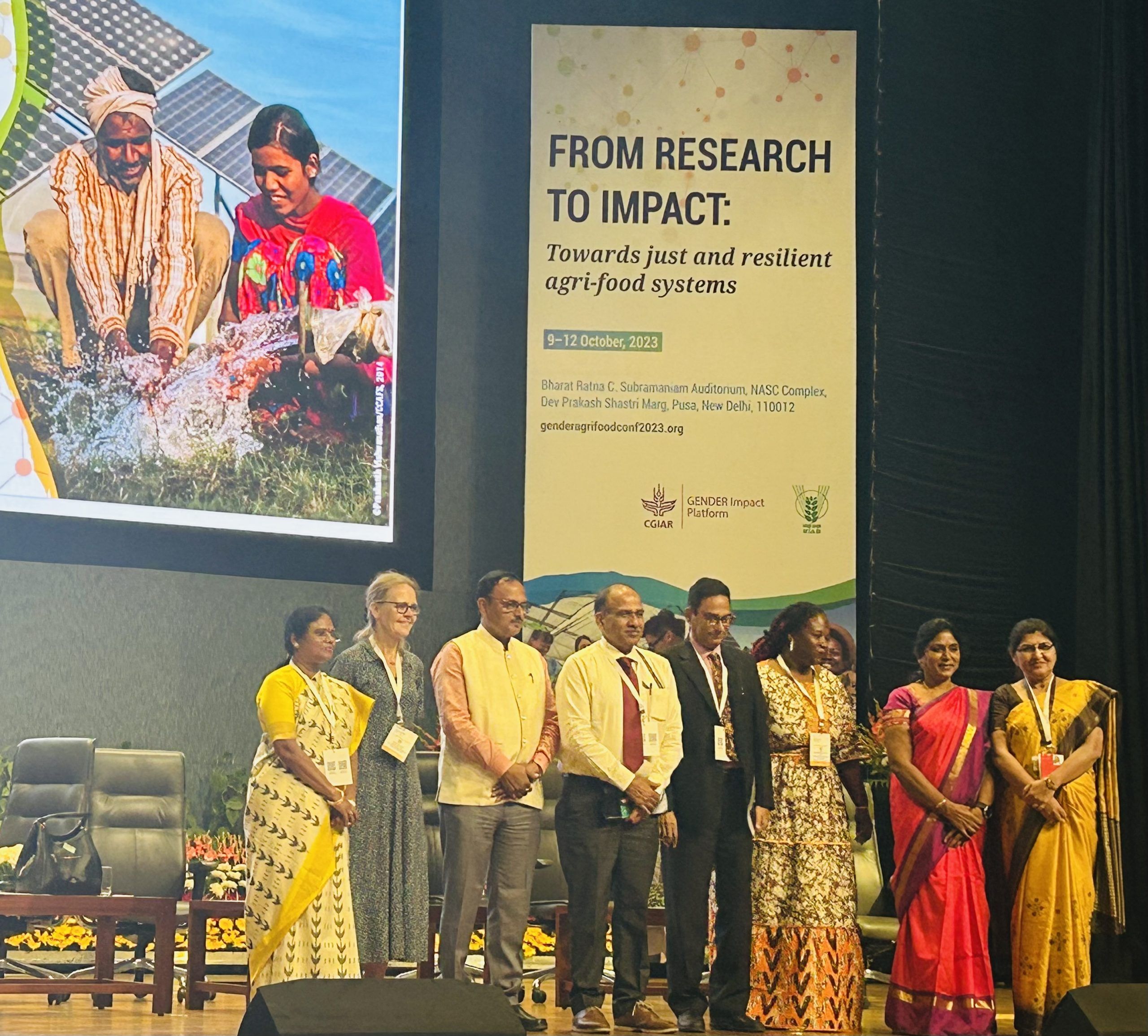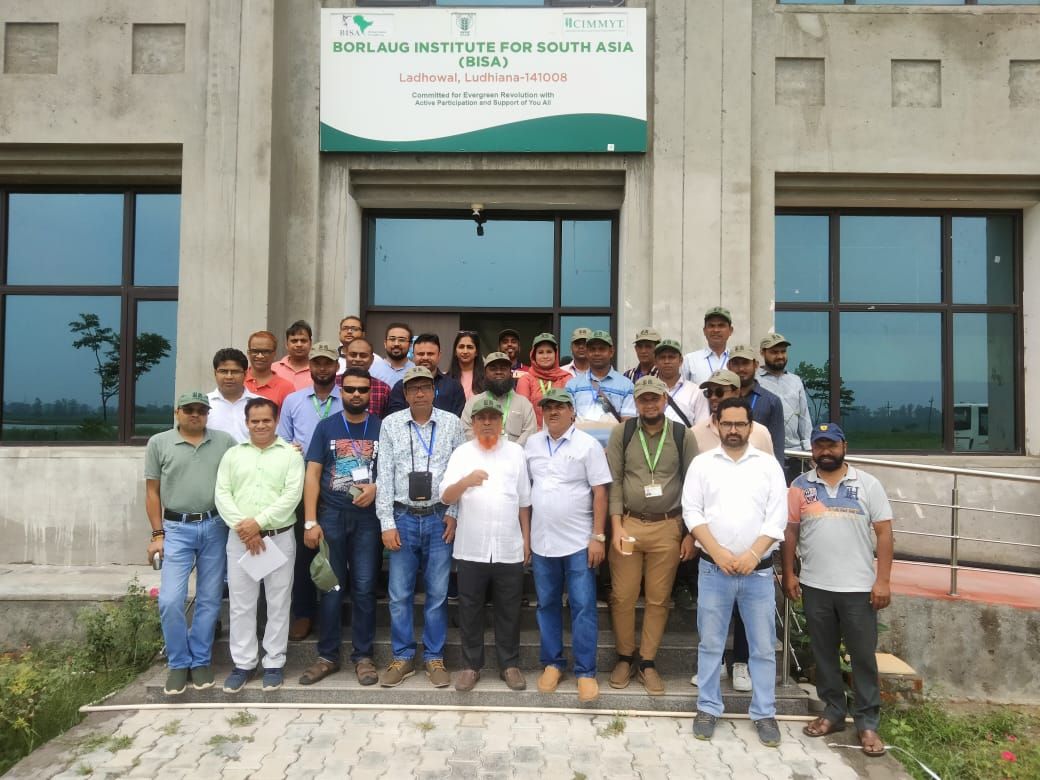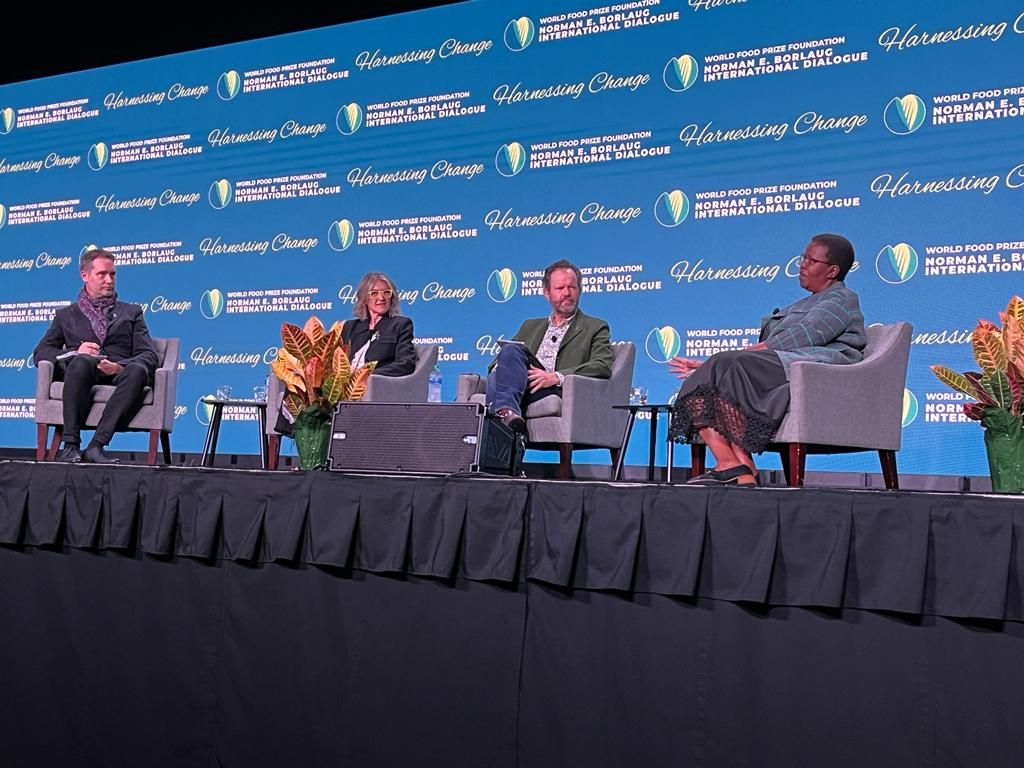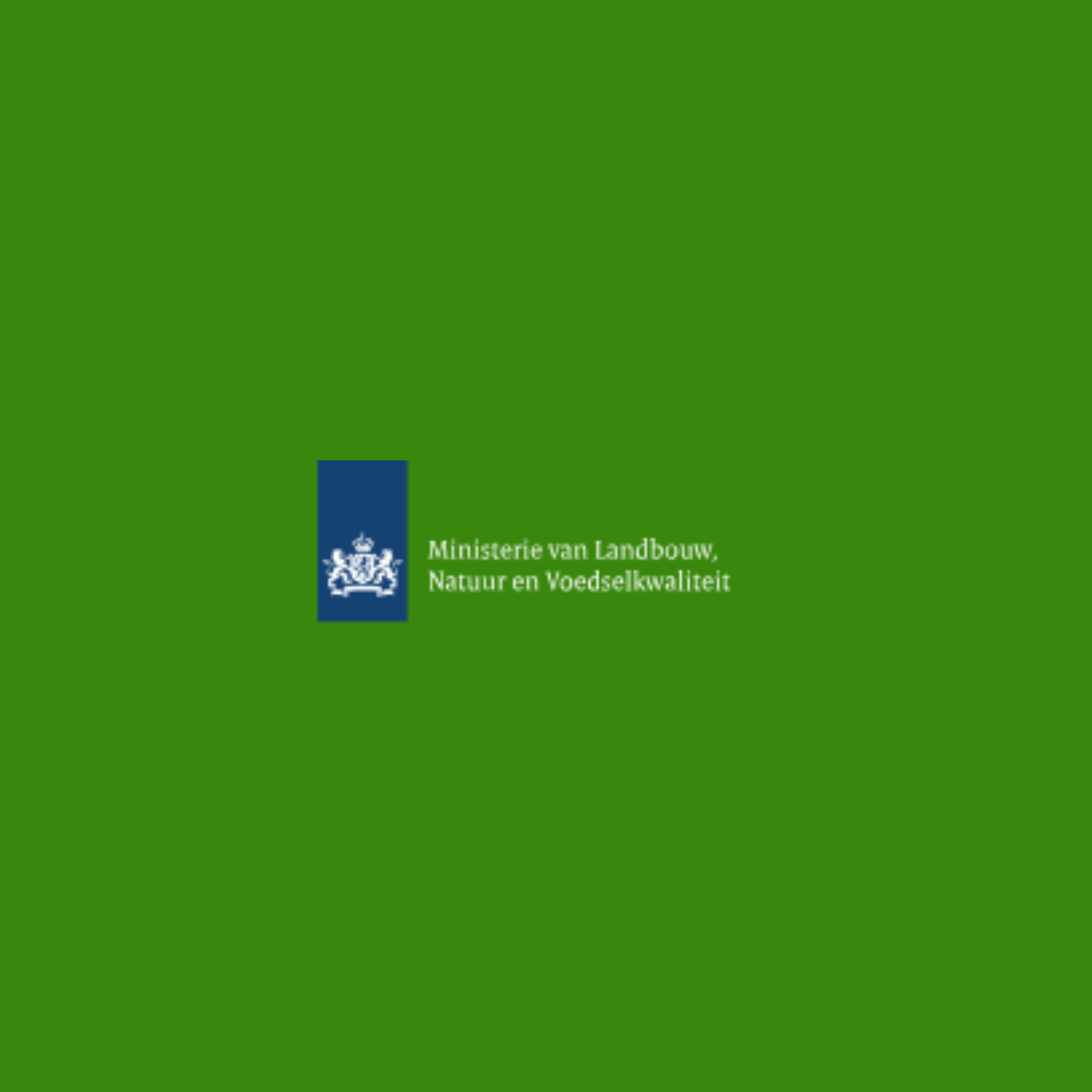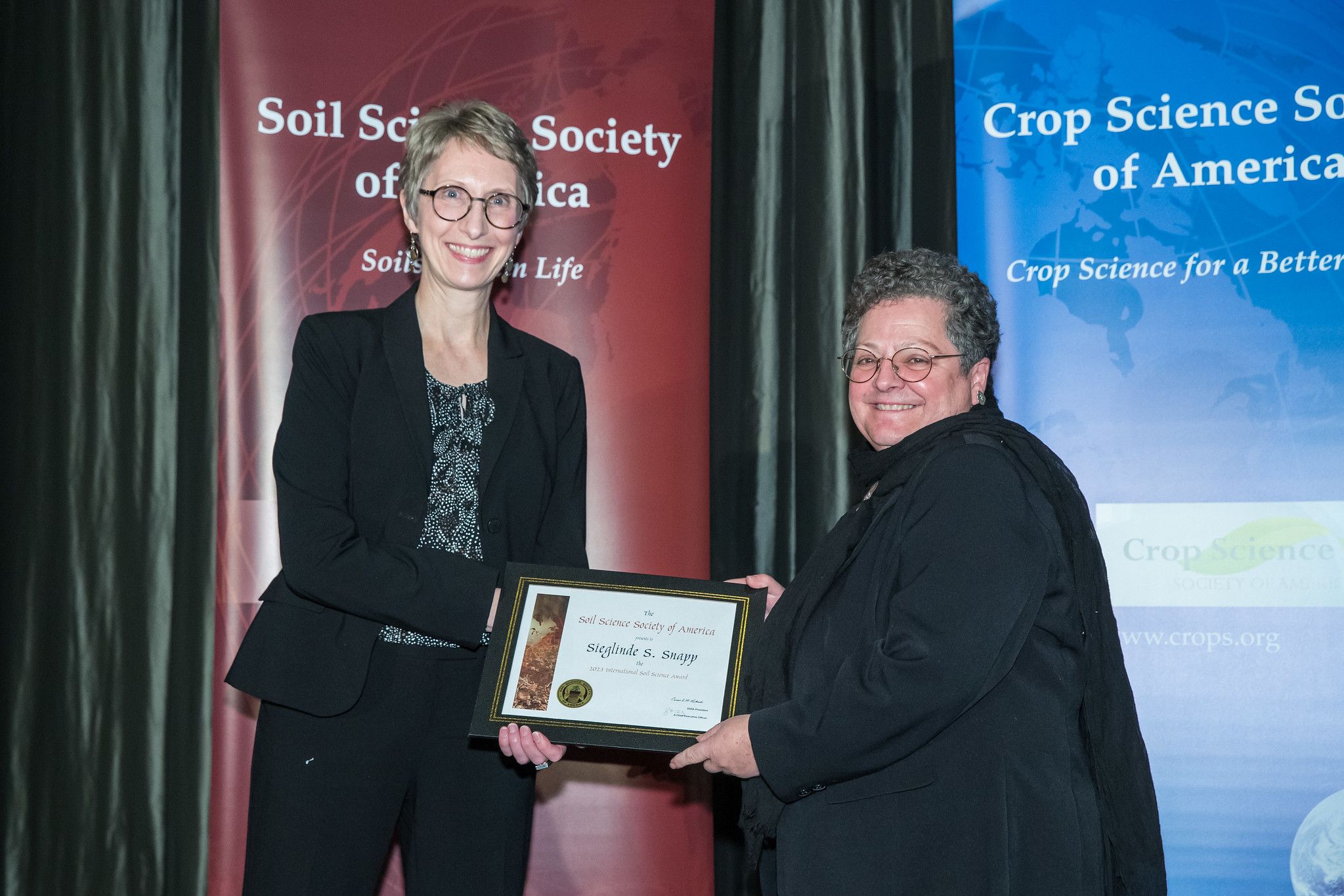research: Sustainable agrifood systems
Sowing seeds of change: CIMMYT leads crop diversification efforts in South Asia
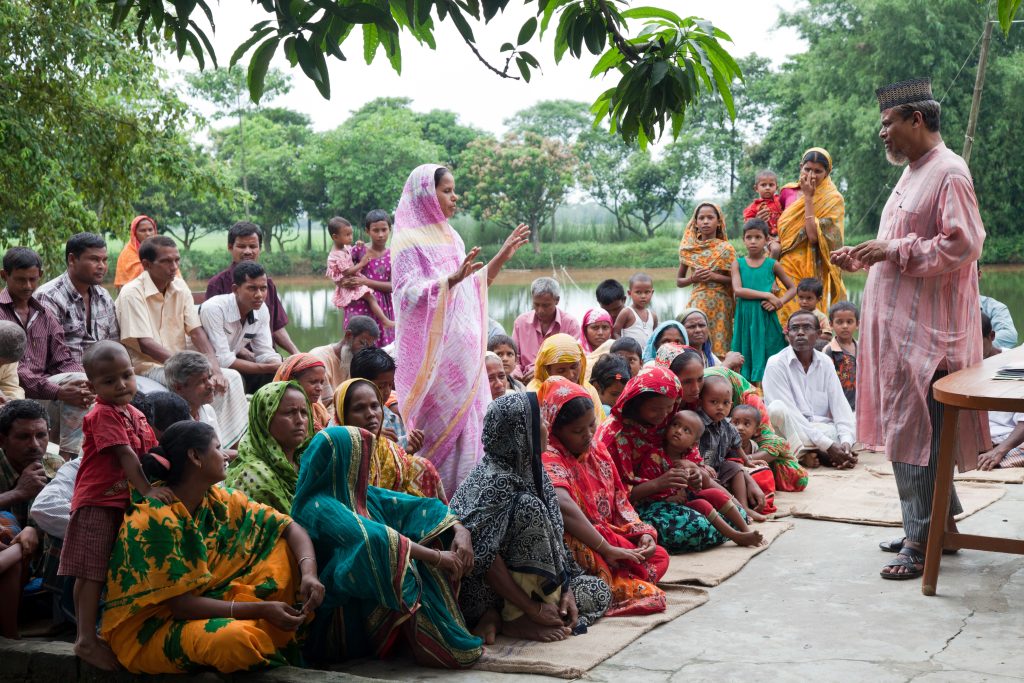
Rapid urbanization, globalization, economic development, technological advancement, and changing agriculture production systems in South Asia are transforming food systems and the food environment.
India and Bangladesh, particularly, have seen a significant transformation since the advent of the Green Revolution as each became able to feed their population without having to import major crops.
However, that policy focus on food self-sufficiency and yield intensification has incurred significant health, environmental and fiscal costs, including a precipitous drop in crop diversification*.
This loss of crop diversification threatens economic and social development and environmental stability while weakening the crucial link between agriculture and community health, particularly in undernourished rural areas. To ensure sustainable food production and nutritional security, it is imperative to manage and conserve crop diversification.
To address these issues and ensure sustainable food production, there is an urgent need to transition from intensive to sustainable farming practices.
CIMMYT exploring crop diversification pathways
CIMMYT’s ongoing projects in South Asia, including the Transforming Agrifood Systems in South Asia (TAFSSA) and Transforming Smallholder Food Systems in the Eastern Gangetic Plains (RUPANTAR) are conducting extensive on-site and on-farm trials, including socioeconomic dimensions of farmers to promote crop diversification.
“To effectively address the challenges of crop diversification, it is essential to integrate on-farm trials and participatory action research, involving farmers in the experimentation and adaptation process tailored to their unique regional needs,” said Ravi Nandi, innovation systems scientist at CIMMYT in Bangladesh. “This hands-on involvement provides valuable data to guide policymaking, ensuring relevance and applicability.”
In addition, TAFSSA and RUPANTAR are engaging in participatory action research to uncover the most viable options for crop and livelihood diversification, understand the socioeconomic factors impacting farmers, and identify the potential opportunities and challenges associated with the crop and livelihood diversification efforts among the farmers.
Researchers completed two comprehensive surveys, engaging with 2,500 farmers across the Eastern Gangetic Plains (EGP) of India, Nepal and Bangladesh, yielding valuable data that will inform future strategies for crop diversification in the region.
Ongoing investigations into the political economy of policies for crop diversification in Bangladesh generate novel insights, further contributing to the development of efficient crop diversification projects and sustainable agricultural policies.
The rise of crop diversification in practices and policy
In recent years, crop diversification has gained traction as a promising strategy to boost agricultural productivity, reduce risks (production, market, climate, and environmental), enhance nutritional outcomes, and promote sustainable agriculture.
Following the inaugural National Conference of Chief Secretaries in Dharamshala, India, led by the Prime Minister of India, state governments introduced numerous policies and schemes to support crop diversification. Some of these initiatives, highlighted in Figure 1, were backed by substantial budget allocations aimed at motivating farmers to diversify their crop production from the current intensive production system.
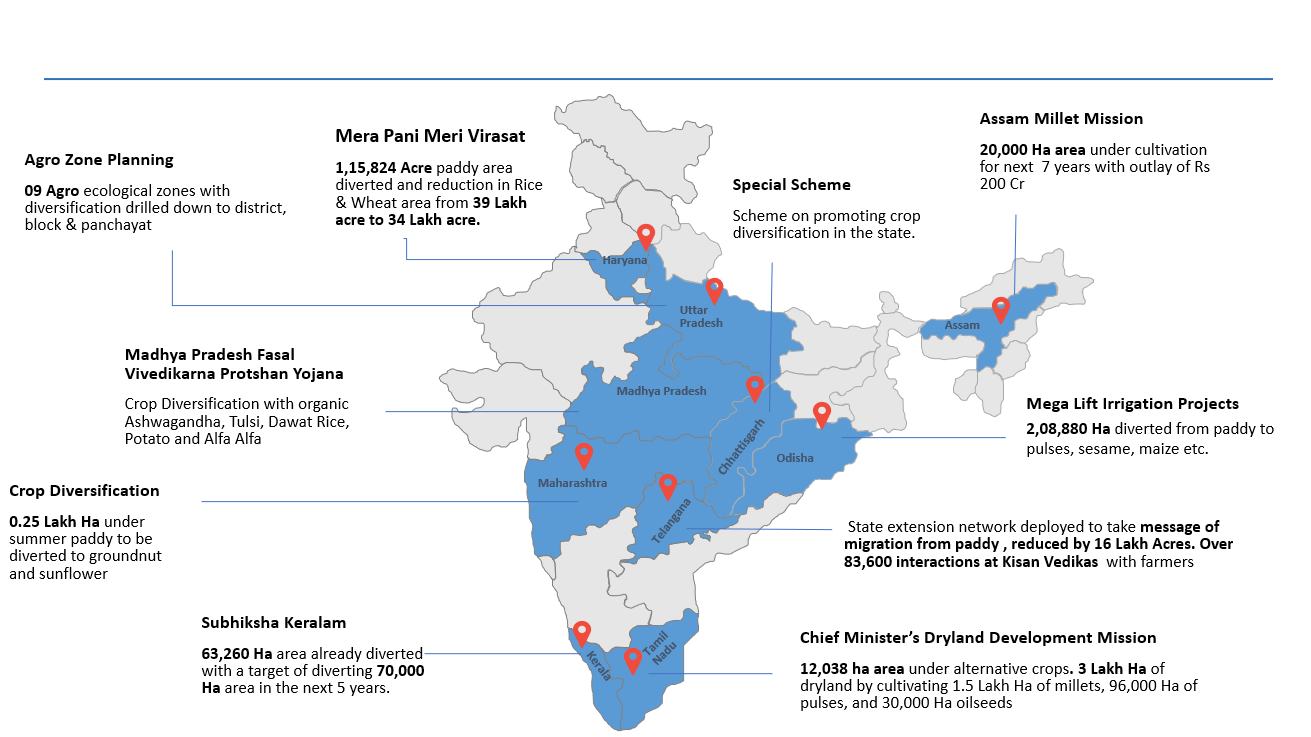
Similar initiatives have been started in Bangladesh, Nepal and other South Asian countries to promote crop diversification. These policies and schemes are important steps towards addressing inadequacies that intensive farming has created in agriculture and food systems.
While policies promoting crop diversification in South Asia are a positive step, their effectiveness is contingent on evidence-based decision-making. The complexities of implementing diversification strategies vary significantly depending on local contexts, particularly in countries like India, Nepal and Bangladesh, where most farmers operate on less than one hectare of land and face diverse weather conditions.
Smallholder farmers, at risk of losing economic stability from abandoning profitable monocrops, face additional challenges because of limited access to advanced technologies and fragmented markets, making the transition to diversified farming a precarious endeavor.
A shift towards comprehensive multi-criteria assessments, including qualitative methods and stakeholder interactions, is necessary for creating practical and locally relevant indicators. Supporting infrastructure, accessible extension services and market development, along with empowering farmers through education on agronomic practices and crop management, will play a crucial role in successfully implementing and reaping the benefits of crop diversification.
*Crop diversification is a process that makes a simplified cropping systems more diverse in time and space by adding additional crops.
Ismahane Elouafi returns to CIMMYT—on a system-wide tour
As part of her fact-finding mission across CGIAR Research Centers, Ismahane Elouafi, CGIAR’s executive managing director, returned to CIMMYT headquarters in Texcoco, Mexico, where she studied as a Ph.D. student twenty years ago. Through meetings with CIMMYT staff from 21-24 December 2023, Elouafi learned how CIMMYT’s 2030 Strategy of more investment in developing food systems and climate-smart agriculture will contribute to CGIAR’s 2030 vision of a food and nutrition secure future.
“CIMMYT was pleased to host Ismahane,” said Bram Govaerts, CIMMYT director general. “Our ultimate mission is to transform agrifood systems. The only way we will reach our goal of food and nutrition security is by working globally and collaboratively across the value chain.”
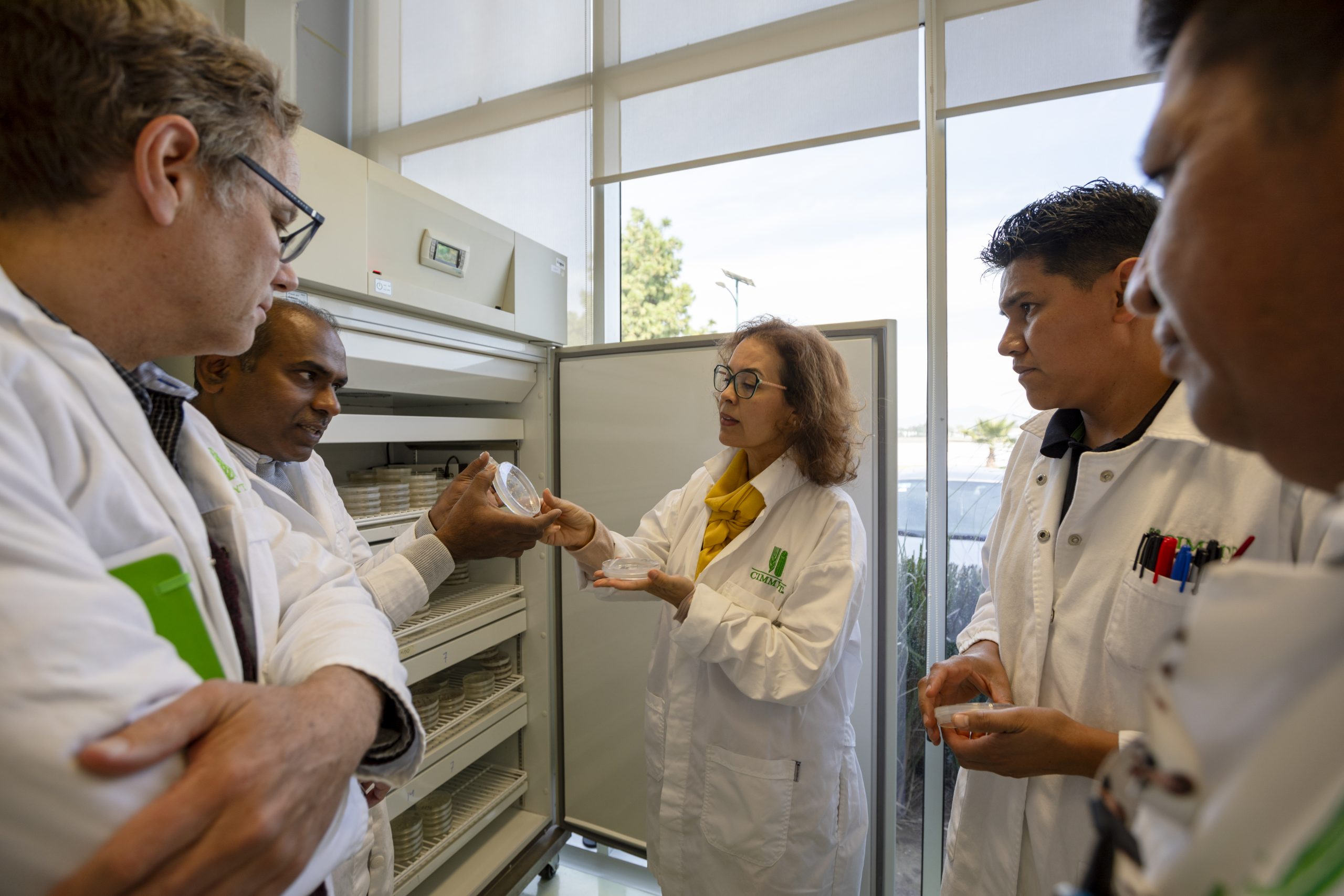
At CIMMYT’s museum and gene bank, Elouafi met with researchers to discuss the latest discoveries in genetic innovation, biodiversity conservation, and crop breeding. Elouafi and Kevin Pixley, director of the Dryland Crops program, visited the biosafety laboratory and glasshouses where gene editing on pearl millet and ground nut represent cutting-edge work with dryland crops. Elouafi also saw gene editing for resistance to maize lethal necrosis, which is already in field validation with Kenyan partners from the Kenya Agricultural & Livestock Research Organization (KALRO).
Global Wheat and Dryland Crops presented CIMMYT’s 2050 vision for wheat in Africa and near-term goals of advancing partnerships from phenotyping platforms to the International Wheat Improvement Network (IWIN). Seed experts from the Seed Health Unit shared progress on the productivity and nutrition findings of key cereals for healthy and balanced diets.
Elouafi also visited conservation trial plots with Jelle Van Loon, associate director of the Sustainable Agrifood Systems (SAS) program, who briefed Elouafi on cropping systems diversity related to maize, wheat, and beans, and showcased a variety of innovative farming technologies. At the trial plots, Elouafi met with Guillermo Bretón, a farmer, to talk about CIMMYT’s efforts to expand the MasAgro program into Central America aiming to address the region’s growing food insecurity contributing to migration.
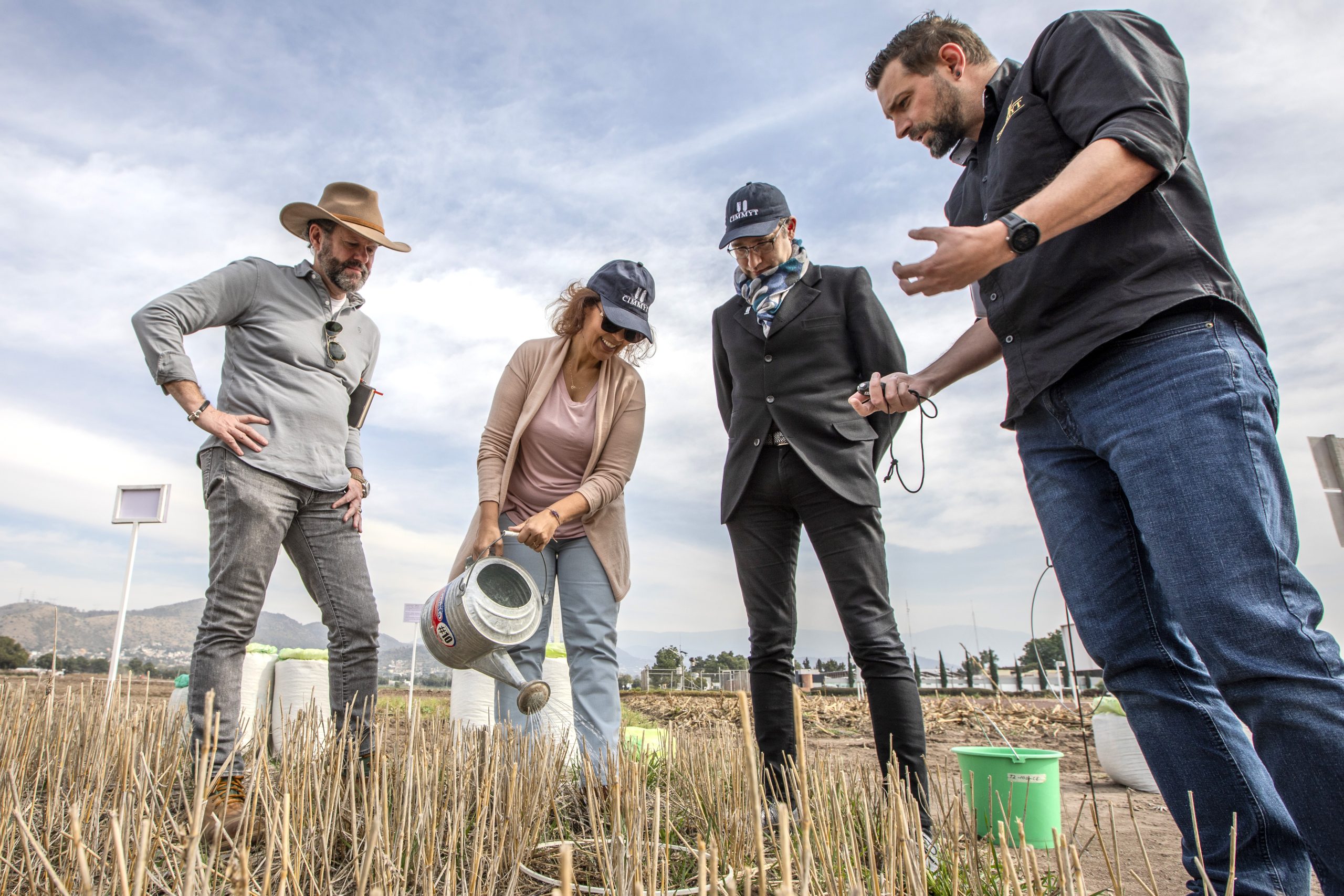
The value of genetic resources as sources of novel diversity was discussed with Elouafi during a visit to field screenhouses, where she saw wide crosses work for biological nitrification inhibition (BNI) in wheat, gene bank accessions of triticale—a cross between wheat and rye—for use in searching for new sources of resistance to wheat blast, and the ex-situ clonal collection of tripsacum, a wild relative of maize.
“CIMMYT’s 2030 Strategy adopts a systems approach to food science, which I strongly support. Through the development of mechanization and post-harvest management, increased focus on seed systems and health, and most importantly, cooperation with partners to ensure that improved crop varieties are adopted by smallholders, I am confident that this approach will only strengthen CIMMYT’s historical strength of research and innovation for food and nutrition security and contribute to achieving CGIAR’s 2030 mission,” said Elouafi.
Kevin Kabunda, chief of party for the Southern Africa Accelerated Innovation Delivery Initiative (AID-I) MasAgro Africa Rapid Delivery Hub (AID-I) and Sieglinde Snapp, director of the SAS program, presented key milestones achieved in southern and eastern Africa on expanded seed systems, market access, and mechanization technologies. Snapp also highlighted important CIMMYT-led initiatives like the CGIAR Plant Health Initiative and the Cereal Systems Initiative for South Asia (CSISA) which have had a positive impact on smallholders in part because of partnerships with government agencies and other CGIAR Research Centers.
Elouafi and Govaerts visited the ancient city of Teotihuacán to learn about the cultural significance of maize to the history and agricultural practices of the Americas. She received a guided tour by chef Carlos Cedillo, operational director of La Gruta, a local restaurant dedicated to understanding and promoting the production and consumption of native maize varieties in the Valley of Mexico. CIMMYT has collaborated with La Gruta through capacity building initiatives by CIMMYT specialists for technicians and farmers.
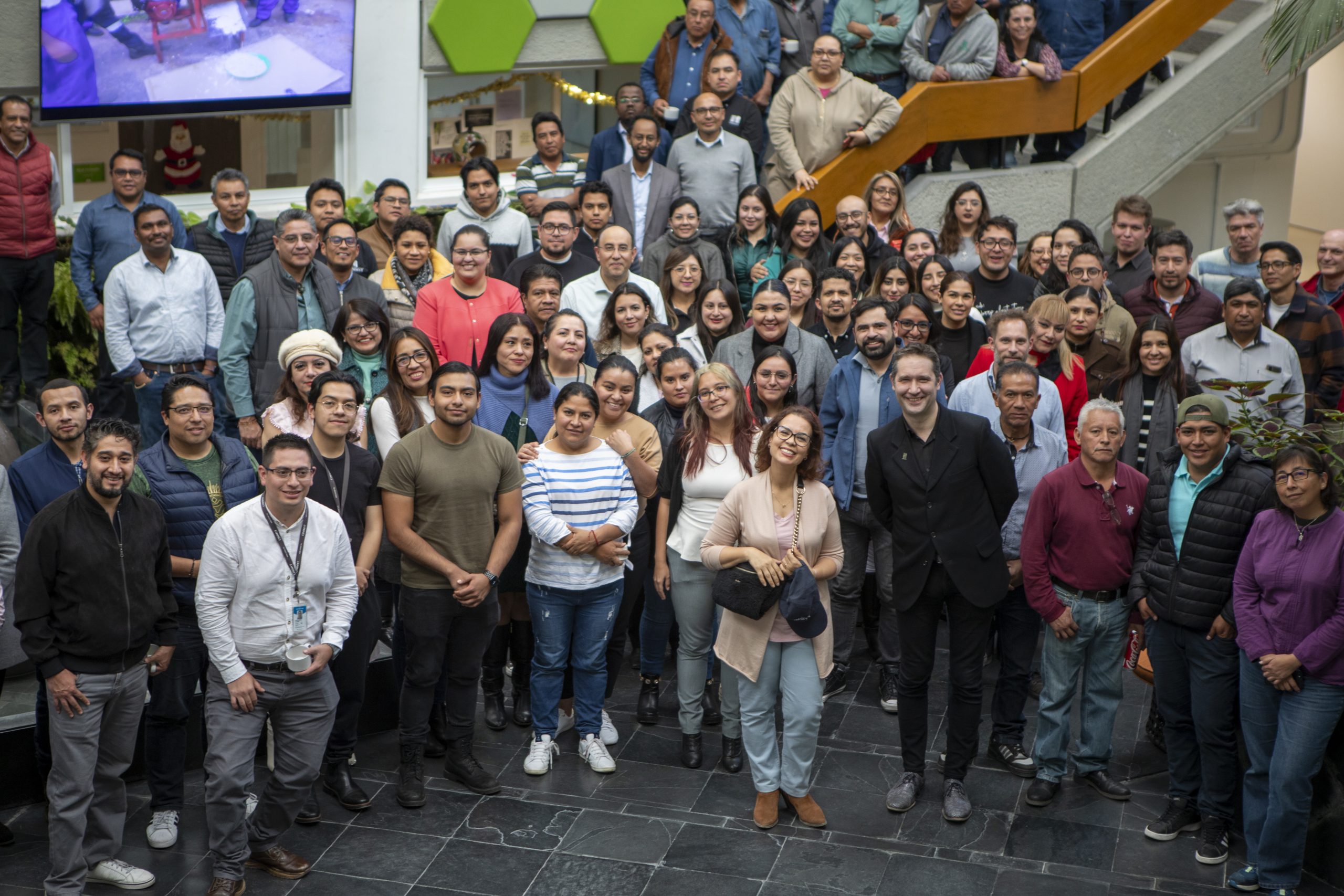
Elouafi joined CIMMYT staff in a meet and greet session on 21 December, where staff expressed the strides being made by CIMMYT’s leadership team to foster a more inclusive workplace. “This moment of coming together with the staff that make CIMMYT a great place to work and who position the Center as a significant actor in agricultural development will be a highlight of my visit,” said Elouafi.
What do we know about the future of agri-food systems in Central and West Asia and North Africa (CWANA)?
In Central and West Asia and North Africa (CWANA), agri-food systems are under pressure from resource depletion, population growth, and food insecurity. CIMMYT’s work is vital, focusing on sustainable agricultural practices and innovative technology to enhance productivity and resilience. Research and development efforts are critical in addressing the environmental and socio-economic challenges of agriculture in this diverse and dynamic region.
Read the full story.
Delivering the best seeds to farmers in Zambia
To bring together farmers with seed distributors and other stakeholders, the Southern Africa Accelerated Innovation Delivery Initiative (AID-I) Rapid Delivery Hub, or MasAgro Africa, held a seed fair with the theme ‘Promoting Access to Drought Tolerant Seed and Appropriate Scale Technologies,’ in Zambia’s Chongwe district. The objectives of the fair were to create a platform for farmers and input suppliers to engage before the onset of the planting season. Over 1,200 farmers attended the seed fair.
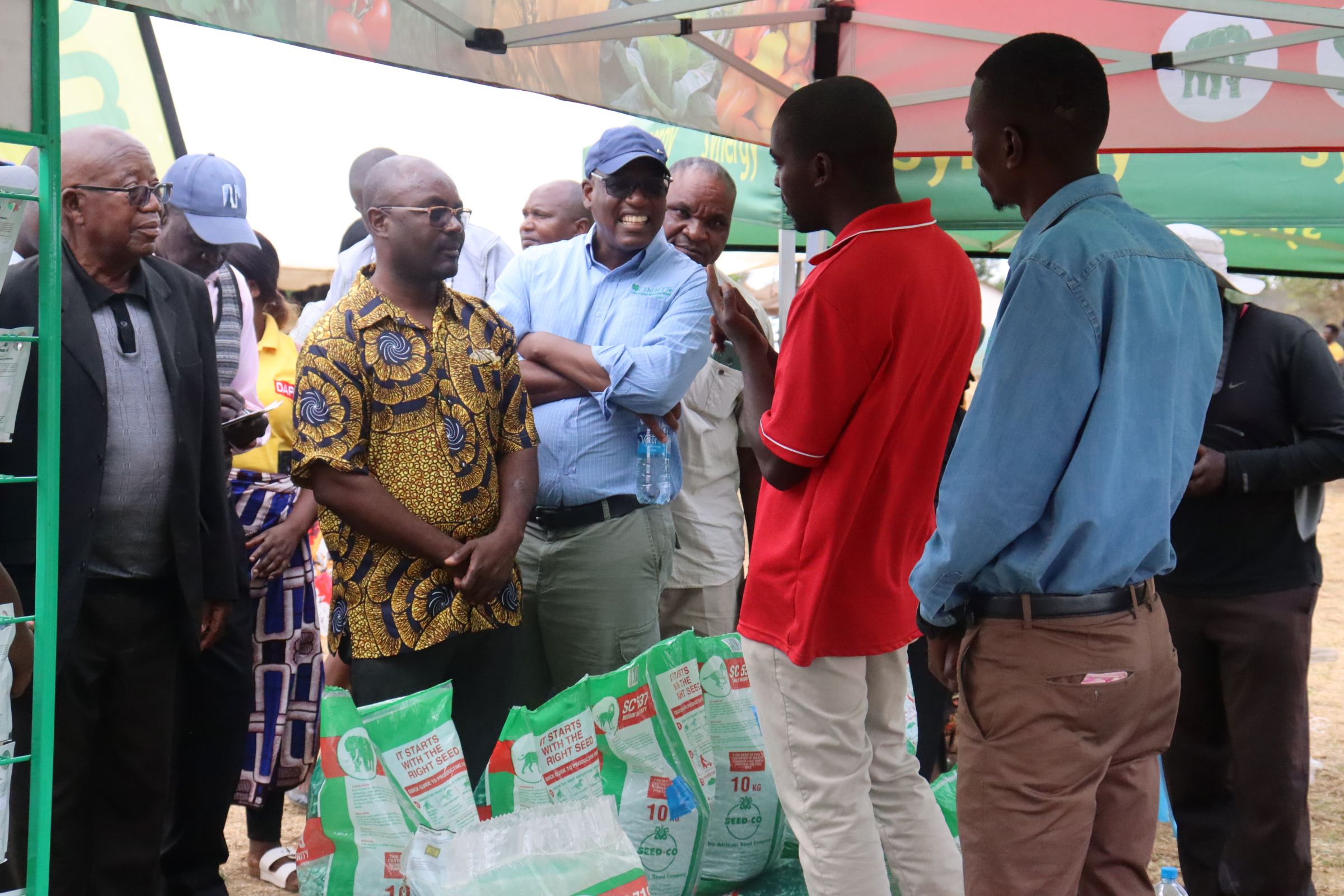
“The seed fair plays a critical role in linking farmers to seed companies and exposes them to appropriate technologies. The links created with agro-dealers and other suppliers ensure farmers gain access to sufficient volumes of appropriate multiple stress tolerant maize hybrids, legume seed and agricultural inputs locally. Access to drought tolerant seed and technology in the times of climate change is timely and critical to today’s farmers. This fair will help our farmers acquire inputs at their doorsteps, promoting food security,” said Kasuba, the district agriculture officer.
AID-I is also using these fairs to provide information on agronomic practices such as conservation agriculture, climate-smart agriculture and small mechanization options to support smallholders not only to learn but also enjoy the events through participation in fun quizzes. Farmers purchase seed and other inputs when they redeem vouchers provided by participating companies who develop the questions for farmers.
A farmer who redeemed a voucher said, “I came from Nyimba, because I heard that there is a seed fair here. What I found was very interesting, and I learned a lot. I saw a lot of seeds from different companies. I have also managed to win this pesticide by answering a question, and I am very happy about this project.”
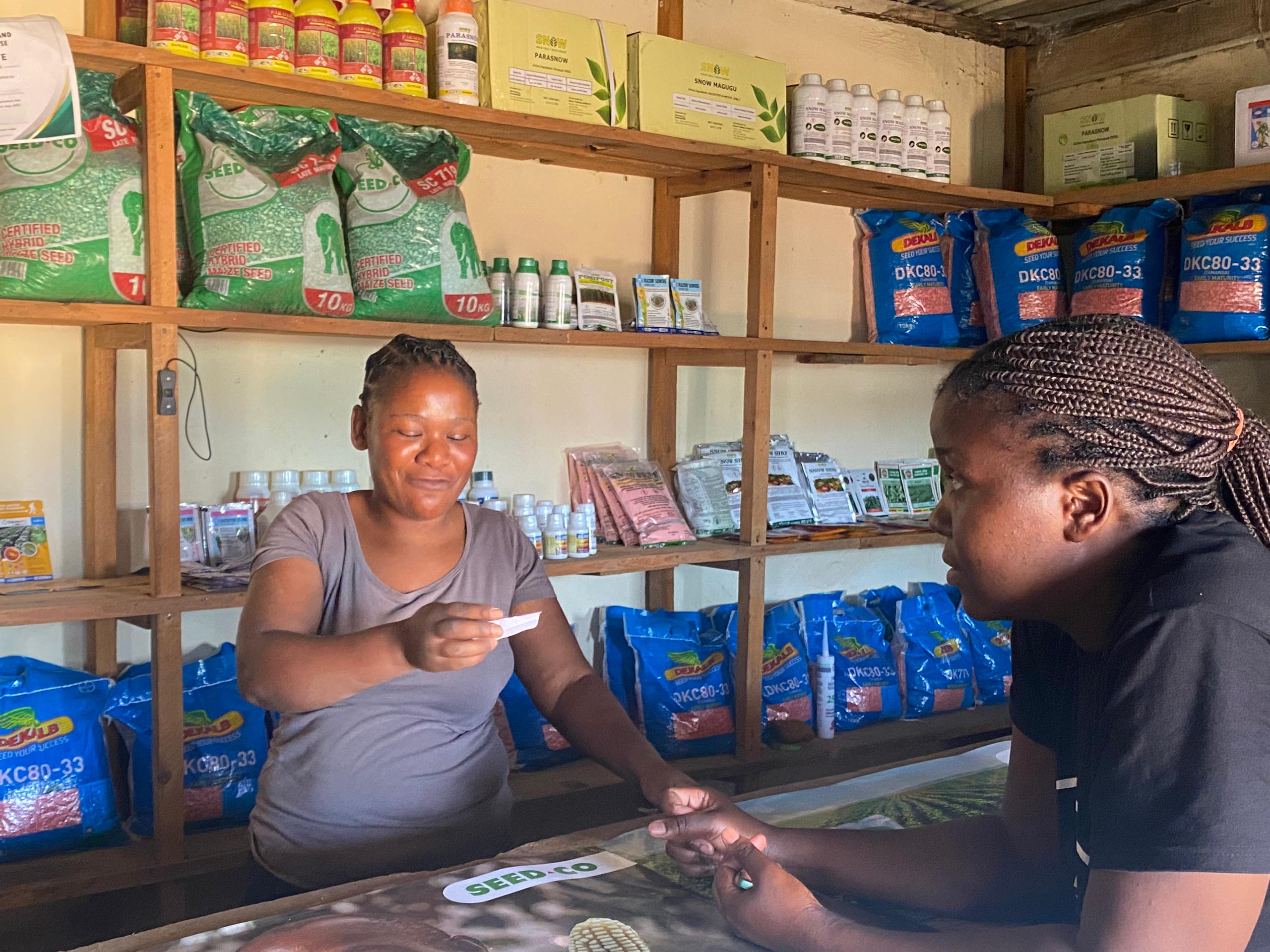
These add-ons to the seed fair ensure farmers learn about climate-smart practices and how they can mitigate climate change effects and crop damage caused by pests by using drought and pest resistant varieties. Pests such as fall armyworm (FAW) are a major threat to smallholder farmers and their crops, as these can destroy crops and lead to a significant decrease in yields and income for the farmer.
Some of the outcomes and benefits for the private sector, and farmers alike include farmers to access different seed hybrids at one location, reduced costs of transportation for farmers who often travel long distances to get inputs. Zamseed, an AID-I partner, was able to promote 600 packs of their ZMS 451-medium and ZMS 721-late maturity seeds. SeedCo, another AID-I partner was able to support farmers with 500 seed packs of their medium maturity SC 303-ultra early, SC 555-early and 657-medium maturity maize seed varieties to farmers. Seed input suppliers noted that maize seed packed in smaller bags weighing 10 kgs and of medium maturity variety seed were the most sought-after and have now influenced how they can reach much larger numbers of smallholder farmers through this observation on improved packaging and demand.
In addition to Zamseed and SeedCo, AID-I partners who participated in the seed fair include the Ministry of Agriculture, CRS, Afriseed, Synergy, Animive Enterprises, Bayer, Amiran, Syngenta, Omnia Fertilizer, and Corteva.
Visiting Chinese scholar devoted to agricultural research in Mexico
CIMMYT stands out for its role in agricultural innovation, demonstrated through the dedicated research of visiting Chinese scholar Wang Hui. Her tenure at CIMMYT underscores the center’s pivotal role in driving agricultural advancements through international partnerships, significantly contributing to global food security and scientific development.
Read the full story.
Kelvin Mulungu
Kelvin Mulungu is an Agricultural Economist whose main research interests lie at the intersection of natural resources, food, and climate change. He has extensive experience in development work in several African countries, including Uganda, Kenya, Tanzania, Ivory Coast, Nigeria, Malawi, Zambia, and some Asian countries. His current research at CIMMYT focuses on understanding social enablers and barriers to adoption, assessing the impact of different agricultural technologies, and testing social incentives to improve farmer adoption of agricultural technologies. He is interested in applying the latest econometric advances to provide rigorous evidence on development challenges in developing countries.
Prior to joining CIMMYT, Kelvin was a research manager at HarvestPlus Zambia, a postdoctoral researcher at AfricaRice, and most recently a postdoctoral fellow at the International Center of Insect Physiology and Ecology (icipe) in Nairobi, Kenya. He holds a PhD in Agricultural and Resource Economics from Colorado State University (USA), an MSc in Agricultural and Applied Economics from Egerton University (Kenya), and a BSc in Agricultural Economics from the University of Zambia.
CIMMYT and WorldVeg in an MoU to enhance sustainable food production, boost youth and women employment
CIMMYT, in collaboration with World Vegetable Center, has embarked on a partnership to enhance sustainable food production and employment for youth and women. This initiative aims to advance food security and poverty reduction by promoting diversified, resilient agricultural practices and strengthening cereal and vegetable value chains, contributing to the Sustainable Develpment Goals.
Read the full story.
CIMMYT-BISA-ICAR partnership brings huge benefits in South Asia
A climate resilient agriculture program for the state of Bihar, India, launched in 2019 by the Borlaug Institute for South Asia (BISA) and the state government, was operating in 190 villages and had by 2022 improved water, soil nutrient, energy, labor and time use efficiency by at least 20% with around 35% higher yields and a reduced environmental footprint, as well as helping rice-wheat farmers to diversify their production with crops such as maize, millet and mungbean, among others.
This is just one of the achievements cited in a recent 2023 end-of-year reflection involving members of the BISA Executive Committee in New Delhi, India, including Bram Govaerts, director general of CIMMYT and BISA, and Arun Kumar Joshi, managing director of BISA.
“BISA has achieved significant milestones and is progressing towards organizational goals,” said Joshi. “The long-standing and productive partnership with the Indian Council of Agricultural Research (ICAR) and agricultural councils of other countries in South Asia became more robust, as strategies that focused on building capacities and improving seed systems for the whole of South Asia were implemented.”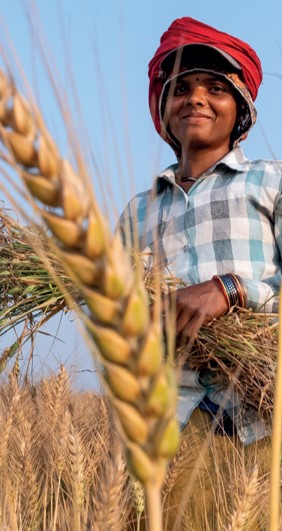
Established jointly by CIMMYT and ICAR in 2011, BISA is a non-profit international research institute dedicated to food, nutrition, livelihood security and environmental rehabilitation in South Asia, home to more than 300 million undernourished people. Its work harnesses the latest genetic, digital, resource management technologies, and research-for-development approaches.
BISA’s flagship projects benefit millions of farmers and include the Atlas of Climate Adaptation in South Asian Agriculture (ACASA), the testing of experimental wheat that carries grass genes associated with the inhibition of nitrification in the soil near crop roots, a climate resilient agriculture program for South Asia, and implementation of the CGIAR Fruit and Vegetables for Sustainable Healthy Diets (FRESH) initiative.
“Of the top 10 bread wheat varieties in India, 6 are derived from the ICAR-CIMMYT-BISA collaboration,” Joshi explained.
“BISA has grown tremendously in the last few years,” said Govaerts. “The diverse arena of projects shows the capabilities and potential that BISA holds today. The flagship programs are undoubtedly creating a huge impact and would contribute to solving tomorrow’s problems today.”
BISA has renewed and diversified its research projects each year, according to T.R. Sharma, deputy director general of Crops, ICAR. “BISA’s impact on genetic innovation in wheat through ICAR-CIMMYT-BISA collaboration is indeed praiseworthy,” he said. Govaerts also attended an interactive session with CIMMYT-BISA India staff, presenting an analysis of the CIMMYT 2030 strategy and encouraging everyone’s contributions towards the goals.
Planting seeds for bringing youth into agriculture
When it comes time to consider career plans, very few young people even consider agriculture as an option. Many young people believe urban areas offer more profitable jobs with less physical labor. However, agriculture in India is evolving every single day. New digital innovations and cutting-edge technologies are making farming more profitable and smarter.
To deliberate on young people’s challenges and solutions to address them, a parallel session was held during the CGIAR GENDER conference, From Research to Impact: Towards Just and Resilient Agri-food Systems, October 9–12, 2023, in New Delhi, India.
In the four-day conference, gender researchers and practitioners from 68 countries shared their perspectives, knowledge and skills about improving gender inclusion in food systems. The conference served as a platform where policymakers, practitioners and private sector actors came together to share the goal of equitable food-systems transformation. They aimed to bridge the gap between research and practice and foster gender-equal and socially inclusive, resilient food systems.
Technology and combined efforts from academia, industry and the government will continue to play critical roles in collectively attracting young people toward these new, innovative ideas in agriculture. Agricultural education can, therefore, play a profound role in shaping the future of sustainable agriculture in India.
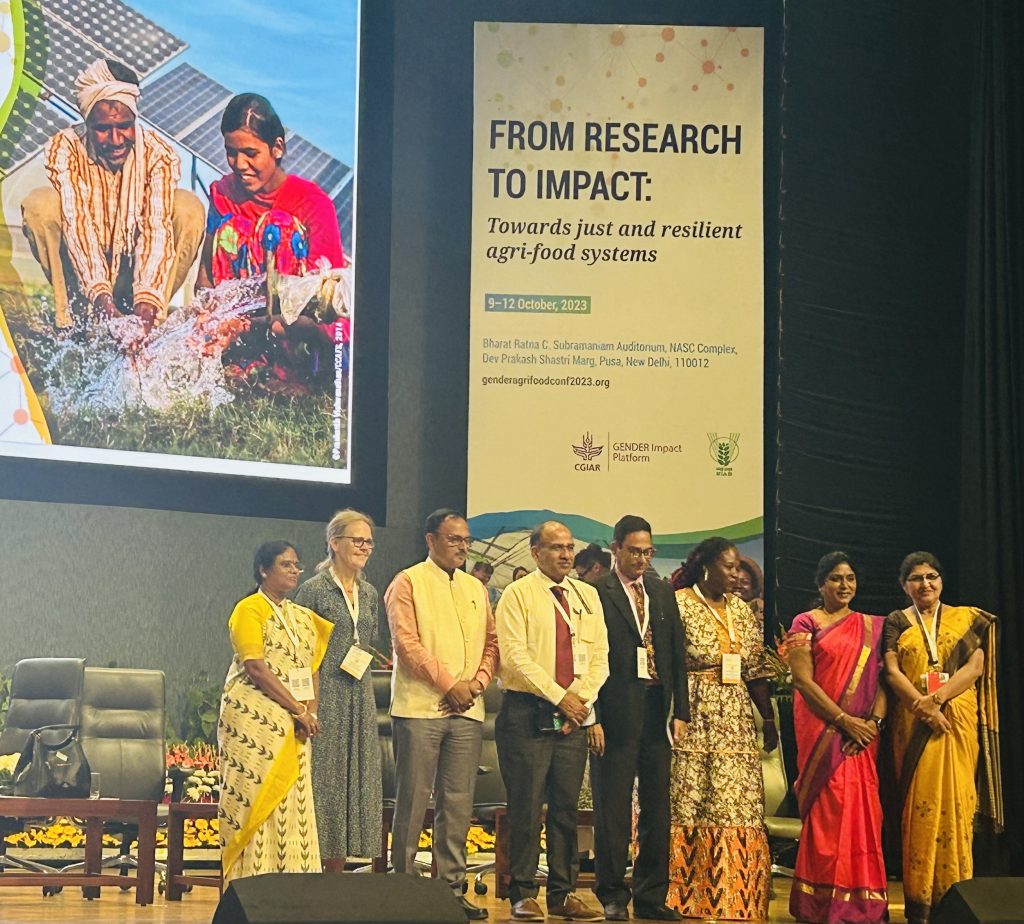
How academia can enable opportunities for youth
S. Pandey, vice-chancellor of Dr. Rajendra Prasad Central Agricultural University, Bihar, shared his thoughts on addressing youth-centric issues in agriculture. He emphasized that artificial intelligence (AI) is increasingly vital because of its many applications and benefits and that it can help youth to use the power of big data and the internet.
“Use of AI can change the entire scenario: technology-driven agriculture is the need of the hour. New tools and techniques are important to address the current challenges where youth can be at center stage,” he said.
In addition, Geethalakshmi Vellingiri, vice-chancellor of Tamil Nadu Agricultural University (TNAU) said, “Agriculture is looked at as manual, hard work, and not as a lucrative job, which makes it unattractive to youth. TNAU is starting One Student One Farm Family linkage for the first-year students. In this model, students will get to know about the issues being faced by the farmers in the field. They will then link the farmer to the scientist for probable solutions, thus bridging the gap.”
Government’s role in shaping policy
“Students are unaware of the different dimensions of agriculture; hence, their inclination towards agriculture education is not much,” said R. C. Agrawal, deputy director general of the Agricultural Education Division of the Indian Council of Agricultural Research (ICAR), and moderator of the youth careers session. “ICAR is designing a new agriculture-based curriculum for primary, middle and secondary levels to attract more youth. ICAR has initiated its efforts towards integrating the agriculture world with this new education policy.”
Industry opening doors for youth in agriculture
Ch. Srinivasa Rao, director of ICAR’s National Academy of Agricultural Research Management (NAARM), Hyderabad, spoke about the importance of industry. “The youth, both men and women, should be sensitized towards the agrifood sector. Start-ups can help to attract youths’ attention. We should characterize farms as an industry, farming as a business and the farmer as a businessperson. If this orientation doesn’t occur, livelihoods cannot be improved, and youth retention in agriculture won’t be achieved.”
Exposing the potential of agricultural mechanization in India and Bangladesh
As geographical neighbors, Bangladesh and India share many characteristics in terms of land, weather, and food production. Because of these similarities, the Feed the Future Cereal Systems Initiative for South Asia-Mechanization Extension Activity (CSISA-MEA) organized a series of exposure visits to India for Bangladeshi farmers and other agricultural stakeholders to establish market linkages, provide access to financial and technical advice.
The CSISA-MEA, funded by the United States Agency for International Development (USAID) works to increase the usage of agricultural machinery to benefit farmers by increasing their productivity and efficiency. The Activity works with several stakeholders, including agriculture-based light engineering (ABLE) enterprises, dealers, and machinery solution providers (MSPs).
Over the course of the activity, a significant lesson learned is that both groups, the hosting party and the visiting party, benefit from exposure visits.
CSISA-MEA organized two international exposure visits to India in July 2023. A total of 34 participants in two cohorts visited India, 18 workers from Faridpur and Cox’s Bazar, and 16 from Bogura and Jashore.
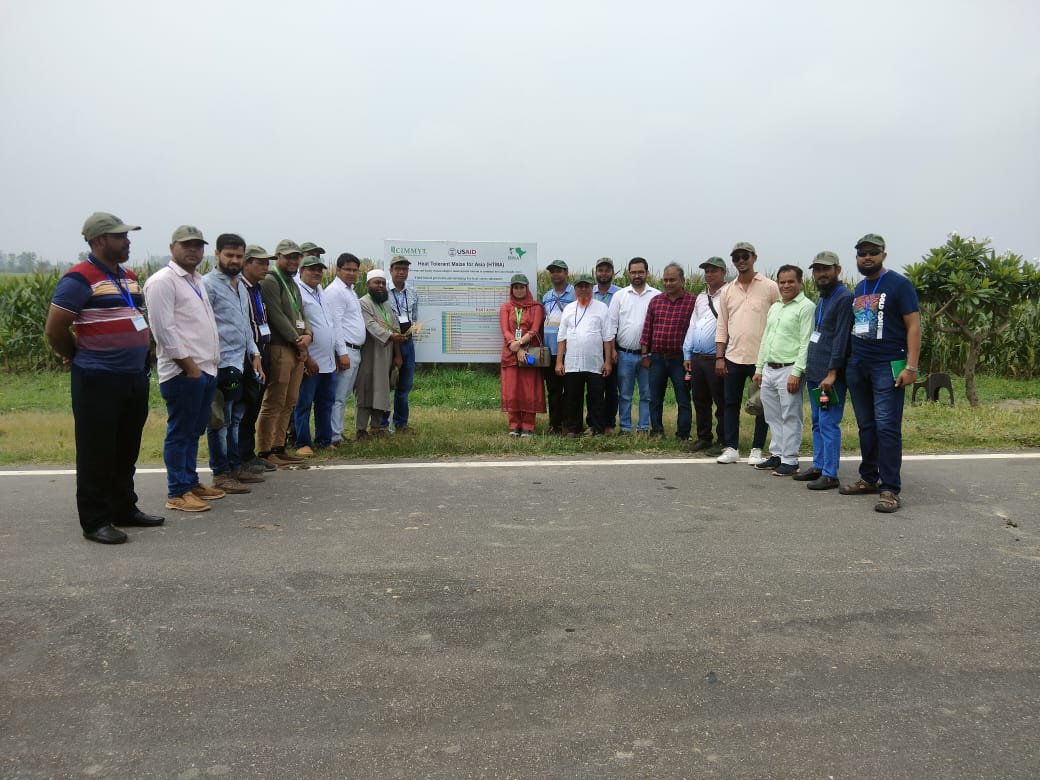
CSISA-MEA arranged the visits with the objective to familiarize Bangladesh ABLE enterprises with modern agri-machinery manufacturing and improve their working practices. The visits covered factories, ABLE workshops and foundries in Punjab, including Amargarh, Bamala, and Ludhiana, areas where India’s agriculture mechanization is most notable, and incorporated public and private sector companies, and academia including LANDFORCE, M/S Dasmesh Mechanical Works, Panesar Agriculture Works Pvt. Ltd., Sokhi Manufacturing Ltd., the Borlaug Institute for South Asia, and National Agro Industry.
Learnings from the exposure visit
The exposure visits have emphasized the importance of systematic line production for machinery and spare parts manufacturing to ensure efficiency and consistency in output. Quality control has been highlighted as a non-negotiable aspect, and the significance of delivering reliable and high-quality products. Using natural light and ventilation systems showcased the potential for environmentally friendly production facilities.
The visits also highlighted how maintaining proper occupational health and safety measures ensures the well-being of the workforce along with a gender inclusive environment in the agri-machinery factories. The factories have a significant female workforce, an eye-opening sight for the ABLE owners of Bangladesh.
These exposure visits have helped equip ABLE owners with invaluable insights and strategies for success in their agricultural machinery businesses, including building connections among themselves, such as that between two ABLEs from Jashore, Bangladesh to facilitate the production and supply of the fodder chopper–demonstrating the potential for cooperation to expand market reach.
Reflections from the visits
The trip to meet their Indian counterparts provided CSISA–MEA ABLE owners with invaluable insights and knowledge, with their unanimous feedback reflecting the profound impact of the visits, which they deemed truly eye-opening. Encouragingly, since their return, each ABLE enterprise has prepared action plans, taking proactive steps to implement the new techniques and business strategies they gained during their visit.
“I can’t express how thrilled I am to have unlocked the secrets behind the exceptional quality of Indian machines and spare parts. It’s not just a technical upgrade, it’s a commitment to quality products,” said Md. Ashraf Hosen, owner of M/S Ashraf Machinery & Akmol Engineering Workshop.
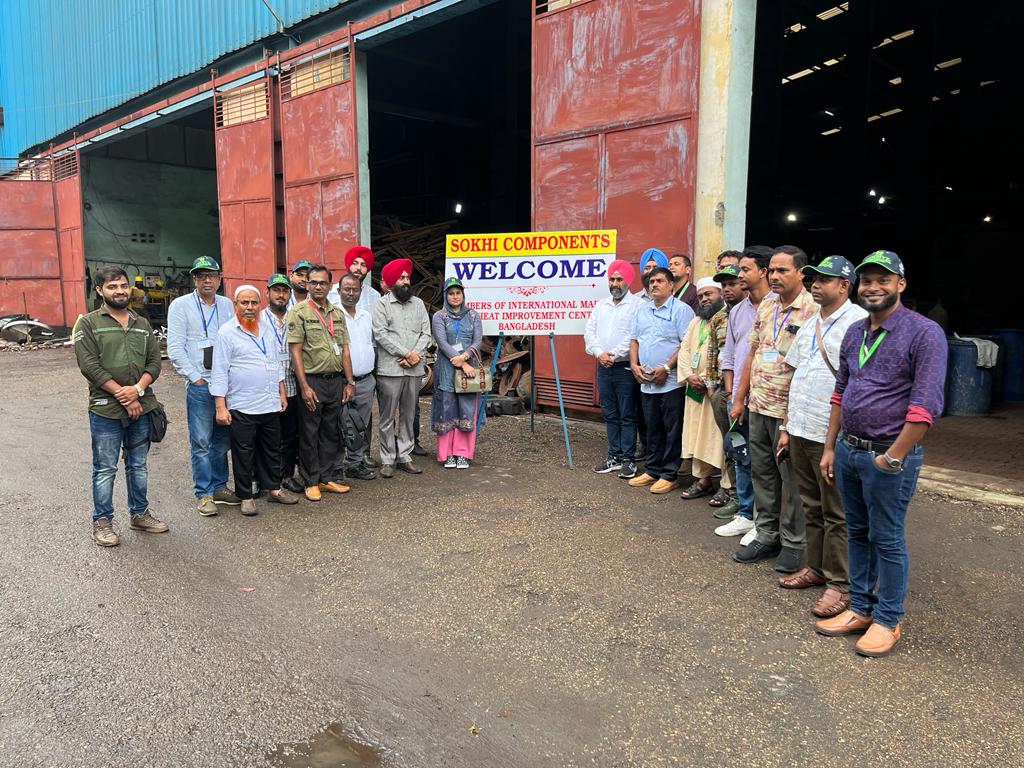
Another visitor, Md. Iqbal Hosen, proprietor of Titas Moulding & Engineering Works, said, “I found discovering new innovations very exciting, especially the core-making process, the mechanical mold-making process to reduce production costs, appropriate charge calculation techniques and induction furnaces. I’m determined to apply these things in my foundry, to improve the quality of the products and reduce production costs.”
Sarkar Agro-Engineering & Multiple Works in Bangladesh has displayed a commitment to implementing the key takeaways of the exposure visit to India. The owners have ensured natural light and ventilation in their production facilities, creating a more conducive and eco-friendlier working environment for staff. They have also installed a customized lathe machine, painting every part of a machine before assembling it, and manufacturing mini tractors, all because of their exposure visit.
CSISA–MEA staff have also taken something from the trips, including feedback to include demonstrations of forging machines in future visits to further extend the workforce’s technical knowledge. There are plans to visit local spare parts markets during the next expedition to provide participants with a broader understanding of market dynamics, while visits to solar power and battery-operated machinery companies would provide an opportunity to witness sustainable technologies in action.
The Landscape of Agricultural Biotechnology
Navigating the Challenges of Modern Agriculture: Kevin Pixley’s, Dryland Crops and Wheat Program Director, expertise highlights the transformative impact of genetic engineering in crop improvement, focusing on developing resilient varieties to meet global food demands amidst climate change.
Read the full story.
CIMMYT at the Borlaug Dialogue
Harnessing Change was the theme of the 2023 Borlaug Dialogue, an annual summit of international thought leaders, development specialists, researchers, farmers, and practitioners, designed to promote global food systems transformation and food security, and is organized by the World Food Prize Foundation.
This iteration of the Borlaug Dialogue, held in Des Moines, Iowa, October 24-26, 2023, was the site of the inauguration of a collaboration between CIMMYT and the Gorongosa Restoration Project to improve climate resilience, food security and nutrition in Mozambique’s Gorongosa National Park.
“These kinds of collaborations exemplify what the Borlaug Dialogue is all about,” said CIMMYT Director General Bram Govaerts. “The annual event and the work of the World Food Prize Foundation year-round is dedicated to bringing people and organizations together to work better and smarter. CIMMYT is proud to be a part of it.”
CGIAR Centers based in the Americas host discussion on Latin America’s food security challenges and opportunities
CIMMYT, the International Potato Center (CIP), the Alliance of Bioversity International and the International Center for Tropical Agriculture, and International Food Policy Research Institute (IFPRI) co-organized the side event Maximizing Latin America and the Caribbean’s Contributions to Global Agriculture and Biodiversity Solutions at Dialogue.
Govaerts moderated the panel discussion and the Q&A session that followed with members of the audience.
Panelists, including Elsa Murano, director of the Norman E. Borlaug Institute for International Agriculture & Development, Rob Bertram, chief scientist for the Bureau for Resilience and Food Security at the U.S. Agency for International Development (USAID), and María (pilu) Giraudo, honorary president of Argentina’s No Till Farmers Association, shared views on Latin America’s role in global agriculture from academic, development and farming offer academic insights, international cooperation recommendations and farmer perspectives.
CIMMYT and USAID co-host panel focused on AID-I’s impact at the Borlaug Dialogue
CIMMYT and USAID hosted an event at the Dialogue organized by the World Food Prize Foundation on October 25 focused on the Southern Africa Accelerated Innovation Delivery Initiative (AID-I).
The discussion labelled, Harnessing Innovation to Rapidly Respond to Crises, aimed to present AID-I’s innovative approach to addressing systemic weaknesses in agriculture by accelerating the market-based delivery of improved seeds, fertilizers, and critical information to farmers.
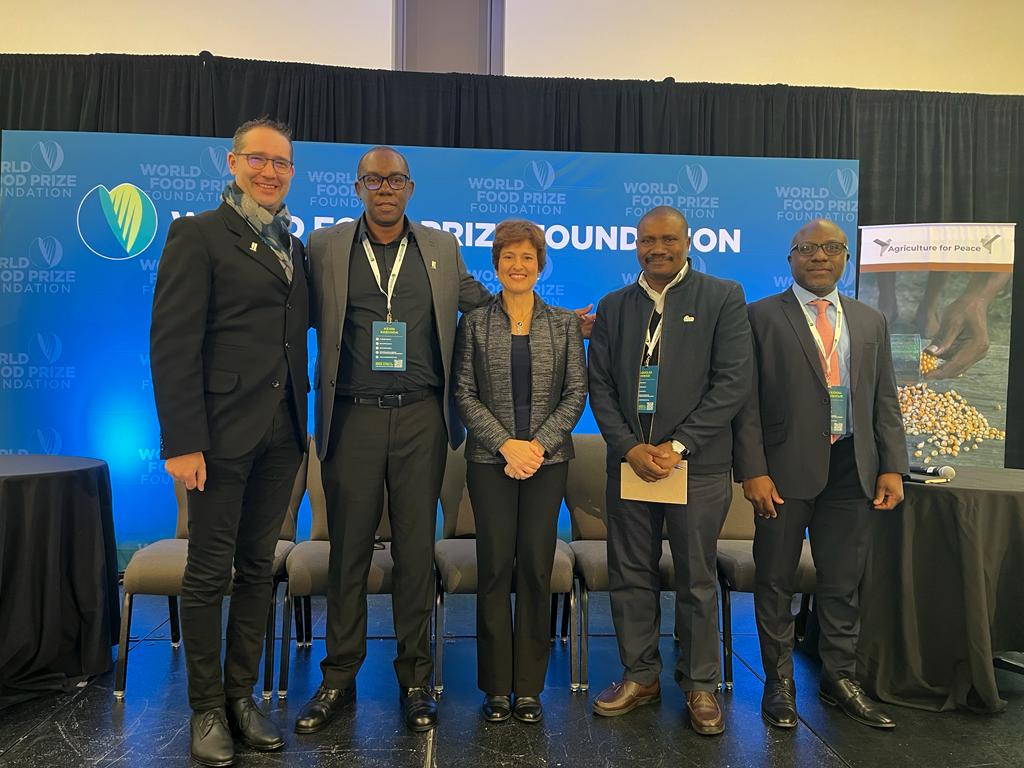
Dina Esposito, USAID’s Global Food Crisis coordinator and assistant to the Administrator for the Bureau for Resilience, Environment and Food Security, described how AID-I is “turning crisis into opportunity” by improving farmers’ resilience and profitability.
“We joined CIMMYT and went to Zambia, and the partnership was a glimmer in our eyes,” said Esposito, referring to a recent visit to a model farm with AID-I partners.
Reporting progress in Zambia, Malawi and Tanzania, Kevin Kabunda, CIMMYT’S AID-I chief of party in southern Africa, noted that the private sector had produced 13,000 tons of maize in the first year.
“The extended or increased potential for every farmer who uses fall armyworm-tolerant varieties translates to US$100 dollars,” said Kabunda who estimated AID-I reached 1.3 million farmers in its first year generating an aggregated value of at least US$65 million dollars.
In addition, Mtieyedou (Abdou) Konlambigue, AID-I chief of party in the Great Lakes Region, pointed out that the project has given access to new bean varieties and fertilizer recommendations to over 500,000 farmers in Rwanda, Burundi and the Democratic Republic of the Congo.
Farmers take the stage
Two champion farmers, María (pilu) Giraudo and Guillermo Bretón joined CIMMYT’s Director General, Bram Govaerts, and CGIAR Board Chair, Lindiwe Majele Sibanda, during a main stage session of the Borlaug Dialogue organized by the World Food Prize Foundation on Tuesday, October 24.
The event, MasAgro Taking it to the Farmer, reported on progress achieved and milestones reached by one of CIMMYT’s flagship projects, Crops for Mexico (MasAgro), which began 14 years ago and earned Govaerts the 2014 Norman E. Borlaug Award for Field Research and Application endowed by The Rockefeller Foundation.
Giraudo, an Argentinian farmer who co-founded the Rural Women Network and serves as honorary president of Argentina’s no till farmer association Aapersid, said that the best way to acknowledge MasAgro’s work is to seize the opportunity to offer women farmers the possibility of having full access to science and technology.
Bretón, a farmer from Mexico’s state of Tlaxcala, described MasAgro as a disruptive way of understanding agriculture. “Investing in our soils is better than investing in a one-cycle crop,” he said.
CGIAR Board Chair Lindiwe Majele Sibanda was enthusiastic about the project’s trajectory and proud of its evolution into CIMMYT’s ongoing efforts, including adapting MasAgro to southern Africa.
Sibanda expressed her excitement about MasAgro-inspired activities in Africa and praised the diversified seed systems that today include dryland crops sold in smaller seed bags by young entrepreneurs who are taking up businesses in villages without having to go to urban centers.
Govaerts moderated the event and thanked Dina Esposito, and U.S. Special Envoy for Global Food Security, Cary Fowler, for facilitating the establishment of MasAgro programs in southern Africa.
Cultivando un México Mejor: 100% sustainable barley supply
In the central region of Mexico, specifically in Guanajuato, Heineken, and CIMMYT have teamed up to help barley farmers and suppliers adopt environmentally friendly farming practices.
Read the full story.
Sieg Snapp receives International Soil Science Award
Sieg Snapp, director of the Sustainable Agrifood Systems (SAS) program at CIMMYT, has been selected as a recipient of the 2023 International Soil Science Award. Bestowed by the Soil Science Society of America (SSSA), the award recognizes outstanding contributions to soil science on the international scene.
The awarding panel looks for lasting contributions to international soil science, including creativity and relevance in the establishment of scientific research, the application of sound principles of international significance. A key factor is evidence of bringing about long-lasting change in practices related to soil science in more than country, as Snapp has done through improved understanding of integrated nutrient management in Malawi and Tanzania. Snapp’s receipt of the prestigious award affirms her lifelong commitment to enhancing the science and practice of agriculture for the betterment of the planet and its people.

Snapp is a trailblazing scientist renowned for pioneering the “mother-baby trial” method, the go-to tool for participatory research which has helped develop farmer-approved technologies in 30 countries. Her groundbreaking approach has significantly advanced participatory research, enriching our understanding of soil health, crop diversity and agroecology, informing extension services and policymakers in Africa and beyond.
Snapp received her award at the ASA-CSSA-SSSA International Annual Meeting in St. Louis, Missouri, where she also delivered the ASA Plenary/E.T. & Vam York Distinguished ASA Lectureship. Her talk, titled “Sustainable Agrifood Systems for a Changing World Requires Action-driven Science,” unveiled CIMMYT’s strategy for advancing the science of SAS in a rapidly changing world. In it, she addressed the pressing issues of climate change, conflict and food insecurity, emphasizing the need for action research, new data analytics and agro-diversity. These, she emphasized, are essential elements to safeguard the resilience and sustainability of our farming systems.
